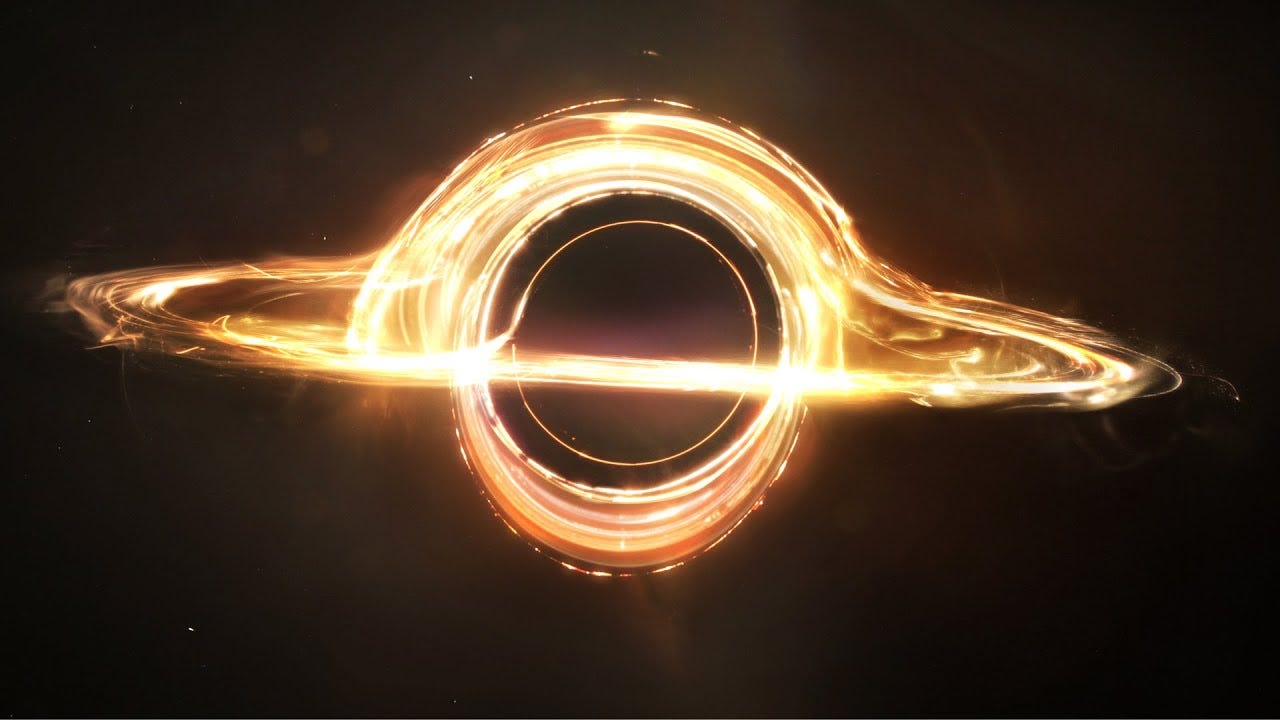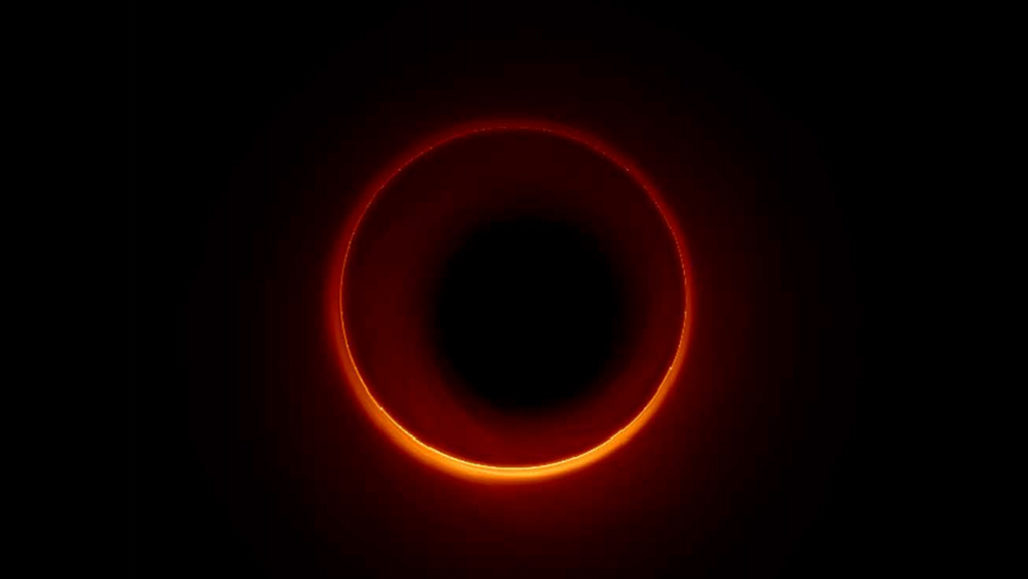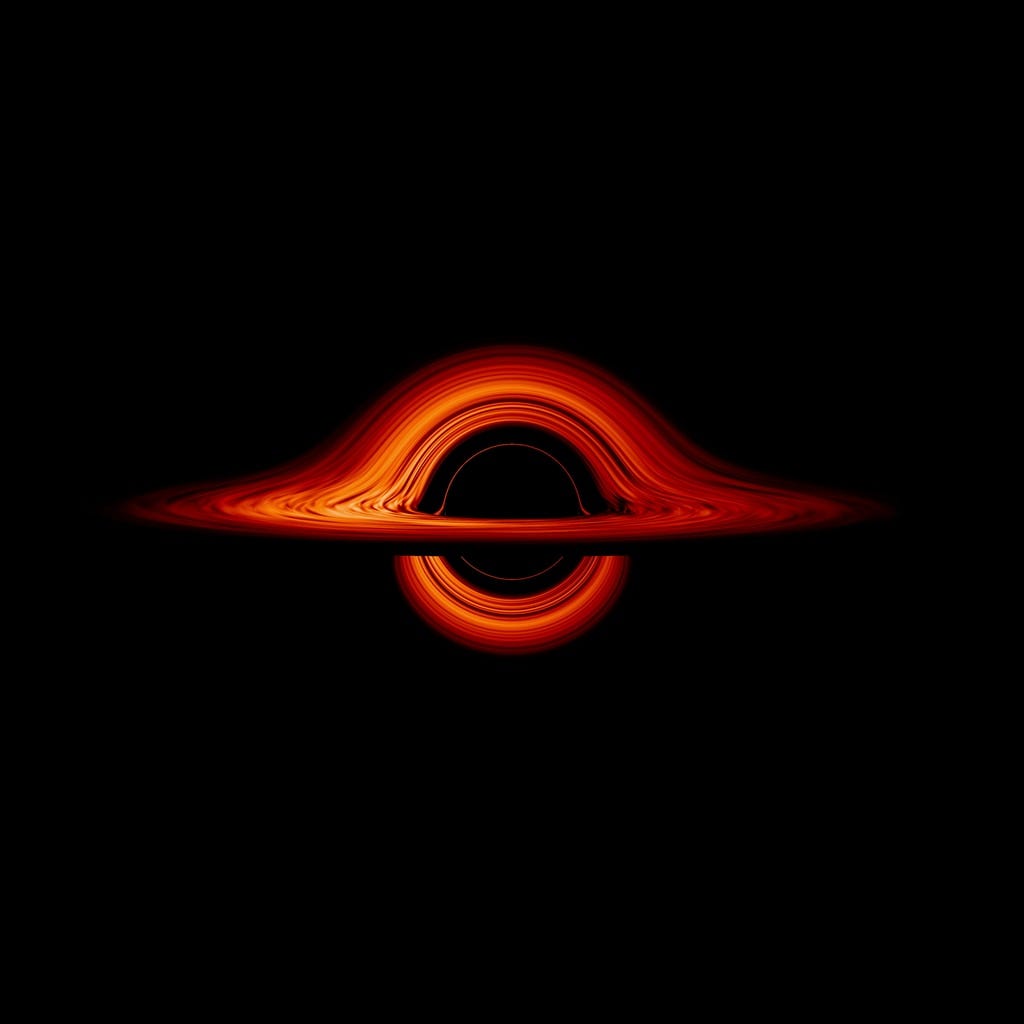(#7) Why Blackhole is one of the most beautiful celestial objects
Understand the physical appearance of Black hole
If you have seen the depiction of a Blackhole in the 2014 Hollywood film Interstellar or any recent visualizations of Black hole, that would have appeared something like below:
In this post I am going to explain this visualization.
But before we proceed further lets have a quick blackhole 101:
Black hole 101
A black hole is called black because it does not give off any light.
A black hole’s gravity is so strong that it can bend the path of lights. A black hole is a region where spacetime is so curved that every possible path which light could take eventually curves and leads back inside the black hole. As a result, once a ray of light enters a black hole, it can never exit. For this reason, a black hole is truly black and never emits light.
However, matter that is near a black hole can give off light in response to the black hole's gravity.
It might be surprising to you to hear that gravity can affect light even though light has no mass (light is composed of massless particles called photons - surprisingly light still has momentum and energy without having any mass - a topic of discussion for some other time).
If gravity obeyed Newton's law of universal gravitation, then gravity would indeed have no effect on light.
Einstein’s general theory of relativity:
However, gravity obeys a more modern set of laws given by Einstein's general theory of relativity. According to general relativity, gravity is actually caused by curving of space and time. Since light travels in a straight line through straight spacetime, the curving of spacetime causes light to follow a curved path.
The gravitational curvature of light's path is a weak enough effect that we don't notice it much on earth but with some carefully designed experiments the bending of distant Star light can be observed around Sun during eclipse (this is how Einstein’s theory of relativity was proved in early 1920’s).
Seeing a Black hole
Light that is near a black hole, but not actually inside it, can escape away to the rest of the universe. This effect is in fact what enables us to indirectly "see" black holes.
For instance, there is a supermassive black hole at the center of our galaxy.
If you point a high-power telescope exactly at the center of our galaxy and zoom way in, you don't see anything. A black hole by itself is truly black. However, the black hole's gravity is so strong that it causes several nearby stars to orbit the black hole. Since these stars are actually outside of the black hole, the light from these stars can reach earth just fine. When scientists pointed a high-power telescope at the center of our galaxy for several years, what they saw was several bright stars orbiting around the same blank spot. This result indicated that the spot is the location of a supermassive black hole.
Understanding the physical appearance of Blackhole
So there are essentially 4 parts to explain here as it relates to the image of a black hole which are:
Photon sphere (a slim circular outline that you see near the center of the blackhole in the image below)
Accretion disk (the massive disk / ring around, over and below the black hole)
Doppler beaming (the brighter left side than the right side of the accretion disk)
The apparent curving of the accretion disk around black hole
1. Photon sphere:
A photon sphere is a location where gravity is so strong that light can travel in circles. Photons orbit the black hole at the distance of the photon sphere. A photon could leave the back of your head, go once around the black hole, and be seen by your eye - you can see the back of your head.
2. Accretion disk:
Accretion disks are a ubiquitous phenomenon in astrophysics - a large cloud of gas and dust revolving around a celestial object. These gas particles constantly smash into each other, thereby converting some of their kinetic energy into heat. With the loss of kinetic energy, the gas particles fall closer to the black hole. In this way, friction causes a large gas cloud to swirl toward a black hole and heat up along the way. Eventually, the cloud of gas falls into the black hole and becomes part of it.
However, before the gas actually enters the black hole, it heats up enough to begin glowing. The light that is emitted consists mostly of x-rays but can also include visible light. Since this light is emitted by the gas before the gas enters the black hole, the light can escape away to the rest of the universe. In this way, light can be emitted from a glowing gas cloud just outside of a black hole even though the black hole itself emits no light. Therefore, we can indirectly "see" a black hole by seeing the glowing gas cloud that surrounds it. This gas cloud is called an accretion disk.
You may ask why this mass collects around black hole in the shape of disk in one single plane (almost) and not sphere around the entire black hole.
Well, the flattened shape of the accretion disk is due to angular momentum.
Imagine a lot of masses rotating around a black hole, on any number of overlapping orbits. Over time they will collide and transfer momentum in a way that causes the many random orbits to coalesce into one orbit which represents the average orbital plane and velocity of all the original masses. BTW this is the same with Saturn's rings, but at a much lower velocity.
3. Doppler beaming:
As the disc is spinning in one direction, the matter moving towards us appears brighter than the matter that is moving away.
Check that the left side of the disk is brighter than the right side.
Actual image of a black hole depicting Doppler beaming
4. Image of the disk’s far side and under side:
Looking onto one edge of the disk, the hole's gravity distorts our view. While the nearer side of the disk passes in front of the black hole as you'd expect, the far side gets warped into two mirror-image humps. Light from the top of the disk's far edge arcs over the top of the black hole, while light from the underside of the disk bends underneath the hole. The result is an image that looks more like a fiery silhouette of Saturn.
With a quick switching of the camera angle, the accretion disk bends back into the flat vortex we expect as depicted in video below:
=================================================================
References:
https://wtamu.edu/~cbaird/sq/2016/03/29/how-does-a-black-hole-give-off-light/
https://socratic.org/questions/why-are-accretion-disks-flat
https://svs.gsfc.nasa.gov/13326










